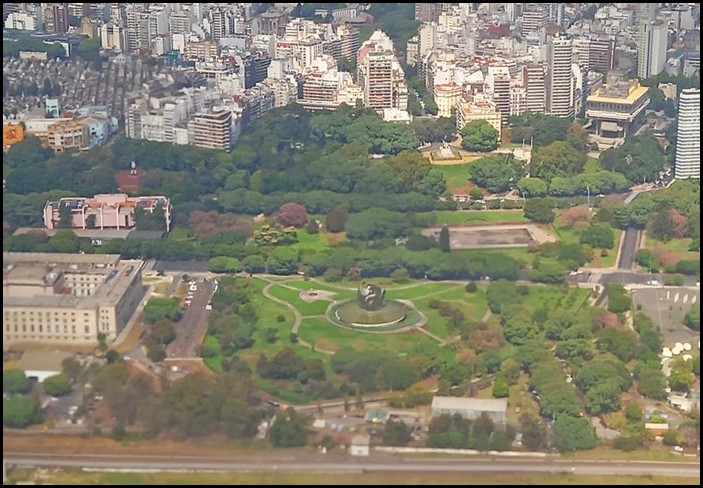
9 Things Distinctly Argentinian
Argentina is one of 13 South American countries, which in general share many similarities and cultural traits. To start with, all were colonized by Spain in the 1500-1800s, and a few also by Portugal. As a result, all speak Spanish, except Brazil, and have a predominantly Latino culture.
Most countries on the continent are dominated, to some extent or other, by the long imposing Andes Mountains that runs the entire length of South America from north to south. Most are also part of the massive Amazonian basin and jungles.
That also means the historical presence of various Andes and/or Amazonian tribes, many of whom still live in their ancestral areas.

Finally, all but two countries have long coastlines on either the Pacific or Atlantic Oceans, making oceans, marine life and/or coastlines/beaches important to some portion of their citizens.
Argentina also shares most of these commonalities: colonized by Spain, Spanish-speaking residents, Latino culture, tall Andes Mountains, long Atlantic coastline. However, Argentina has also managed to have its own unique identity and customs, distinctly different from the other 12 countries of South America.
I’ve been exploring Argentina for more than three months thus far and have noticed several things I haven’t seen anywhere else. Some of them are well-known Argentinian ‘claims to fame’, like the birthplace of Tango, the national herbal drink Mate and arguably the world’s best beef.
But other cultural traits and customs are less known outside of Argentina or the immediate region.
Here’s my run-down of what I’ve come to learn as distinctly Argentinian.
1. Argentinian Spanish
Argentinians speak Spanish like everyone else on the continent, save Brazil, but they have their own unique pronunciation, found nowhere else. More specifically, they add a lot of soft and hard ‘sh’ sounds to the language. In particular:
1. ‘y’ becomes ‘sh’
The Spanish word for ‘beach’ is ‘playa’. In every other country, it’s pronounced ‘pla’ ‘ya’. In Argentina it’s pronounced ‘pla’ ‘sha’.
2. ‘ll’ becomes a harder ‘sh’
In Spanish ‘ll’ is pronounced ‘y’ as in ‘yes’. There are many, many common Spanish words with ‘ll’ such as ‘calle’ (street) and ‘llama’ (the verb ‘call’). Normally these words are pronounced ‘ka’ ‘yeah’ and ‘ya’ ‘ma’. But Argentinians pronounce these words ‘ka’ ‘shay’ and ‘sha’ ‘ma’.
With so many regular Spanish words containing ‘y’ and ‘ll’, the continuing inclusions of ‘sh’ sounds becomes very confusing until you get used to it.
Once you recognize Argentinian pronunciation, it’s easy to identify an Argentinian person once they start speaking. (Though people in the small neighboring country of Uruguay have also picked up this same pronunciation system)

2. Tango
In case you didn’t know, Tango dance originated in Buenos Aires, Argentina. More specifically, it was created in the poor working-class neighborhoods, particularly near the ports and among dock workers. Tango has always been a very steamy, sexy riske, sometimes rough, style of couple’s dancing.
As a result, it was initially shunned by Argentina’s upper classes. But tango eventually caught hold in Argentina and has since spread throughout the world.
However, Buenos Aires arguably still has the best tango clubs, local tango enthusiam, tango dancers and professional performances for tourists. In a few of the city’s smaller plazas, various tango dancers perform in public to earn extra money and exposure.

3. Mate (pronounced ‘ma’ ‘tay’)
Mate is a drink particular to Argentina. In fact, it’s the national drink. It’s essentially a mix of various herbs blended together into a tea. Huge bags of different blends are sold in grocery stores, health food shops and even mate boutique stores.
What really makes mate drinking unique, though, is the way it’s imbibed. There’s a specifically-shaped mate cup, which is like a vertically-placed egg with the top cut off, or a small oval vase. Mate cups are made out of all sorts of materials, including leather, wood, ceramic and others. They come in all colors and patterned covers. But they’re all more or less the same size.
A short thick non-throw-away straw goes with each mate cup. And each person owns his/her own mate cup, which isn’t generally shared with anyone else.
The second big difference between drinking mate and regular tea is that the mate blend is put into the cup and left there, with more and more mate being added over the hours as people sip away at their mate cup. Hot water is repeatedly added as well.
Not that you know about mate, you can spot an Argentinian a mile away! They’ll be carrying their own personal mate cup while walking, sitting in parks, chatting with friends, traveling, going to/from work, riding public transportation, you name it. They even carry their mate sets when traveling overseas! They can’t seem to be separated from it.
They also often carry a big thermos of hot water with them and possibly a bag of mate blend. There’s even a specially-shaped carry bag for mate ‘addicts’ that’s designed to hold the thermos, mate cups and mate blend. Once you know what they look like, they’re also easy to spot.
Btw – Like Spanish pronunciation, mate culture also extends into Uruguay.
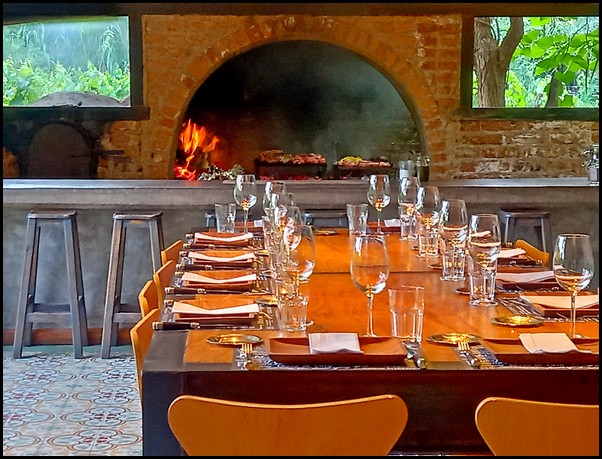
4. Delicious Beef and BBQs
Argentinina beef is renowned around the world for its high quality and delicious flavor. Now that I’ve been buying beef, cooking and eating in Argentina for three months, I can also add that beef here is incredibly inexpensive. Even the beef cut and packaged in supermarkets is extremely delicious, tender and cheap. On several occassions I’ve bought a large slab of thick steak (enough for 2-3 meals for me) for about 300-600 ps / $0.80 – 1.50 US dollars! It’s fresh, tender and very tasty.
Most Argentinians grill beef ‘asado’ on outdoor grills at home or head to ‘steakhouses’ called ‘parrillos’ for a hefty grilled steak and veggies dinner. Grilling beef here is a very long, slow process taking several hours. They usually eat dinner extremely late, generally between 9-11 pm!
However, ‘asado’ and ‘parrillos’ are not unique to Argentina. Neighboring Chile, Uruguay and Brazil are all enamored of grilled beef. And each country claims their asados are the best.
In any event, even those countries generally agree that Argentinian beef is the highest quality.
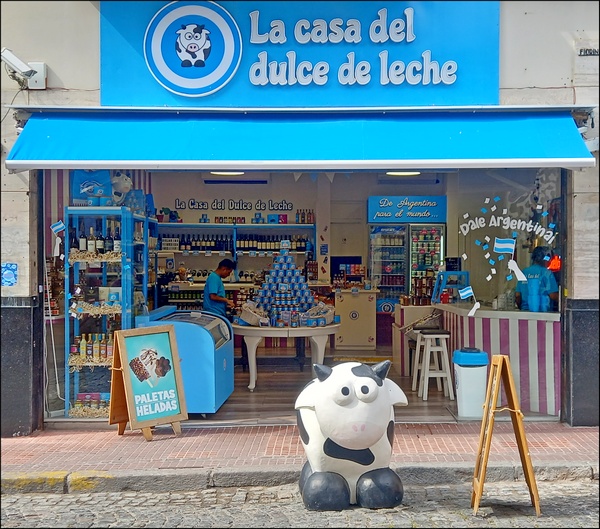
5. Dulce de Leche
Here’s another distinctly Argentinian food item. It looks quite similar to a dark honey and is, essentially, carmel. Argentinians absolutely love this stuff! They use in in all sorts of foods: in chocolates, cakes, cookies, on bread or toast, in various drinks. It’s also sold in jars at grocery stores, like jam or honey.
Dulce de Leche is so popular that there are entire stores devoted just to Dulce de Leche and all the different products containing it.
For me, it’s a bit too cloyingly sweet and after a few cakes and chocolates Math the stuff, I gave up on eating it.
6. Suntanning in public parks
I can’t recall any other countries I’ve visited where people in the middle of big cities and towns engage in suntanning out in public. In fact, most other Latin American countries are rather modest about their dress and body exposure.
So I was quite shocked, during one of my first days in Argentina, to see people laying practically naked in the middle of city parks, obviously taking in the sun. They were completely unabashed and included many seniors, particularly men, laying in sun chairs or on a towel on the lawns, wearing only a pair of short shorts.
That wasn’t a fluke. Nearly every time I walk through a city or town park in Argentina, I see at least one or two people laying in bikinis or shorts, baking in the sun…provided the weather is decent. They include people of all ages, women in bikinis and men in loose shorts.
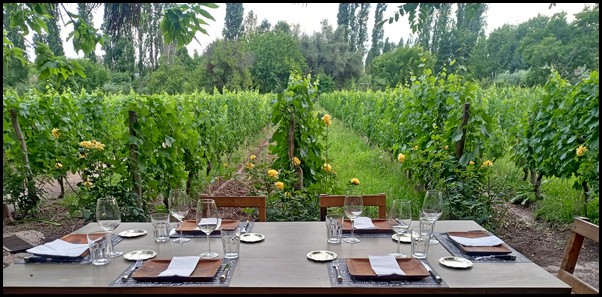
7. Italian influence
Argentinian culture is considered to be more European-influenced than other South American countries. And most of that influence is Italian. It’s claimed that more than 50% of Argentinian family names are Italian.
It was the waves of Italian immigrants in the late 1800s and early 1900s that brought grapes and wine to Argentina, particularly to the Mendoza region in western central Argentina.
More than 100 years later, Mendoza is renowned for its vineyards and wines. The region even boasts several upscale ranch-style and boutique-style hotels focused on their wines, vineyards and wineries. Wine-tourism is thriving.
Besides wines, Italians have added other dining and drinking traditions. In Buenos Aires in particular, you’ll find lots of fresh Italian pastas, sold in specialty pasta shops and even grocery stores, In addition, there are heaps of pizzarias, Italian-style bakeries and cake shops, and quiche-like tortes filled with various combinations of vegetables and/or hams.
Argentina also has a huge cafe / espresso culture that started up long, long before Starbucks got things rolling in the US in the 1990s.
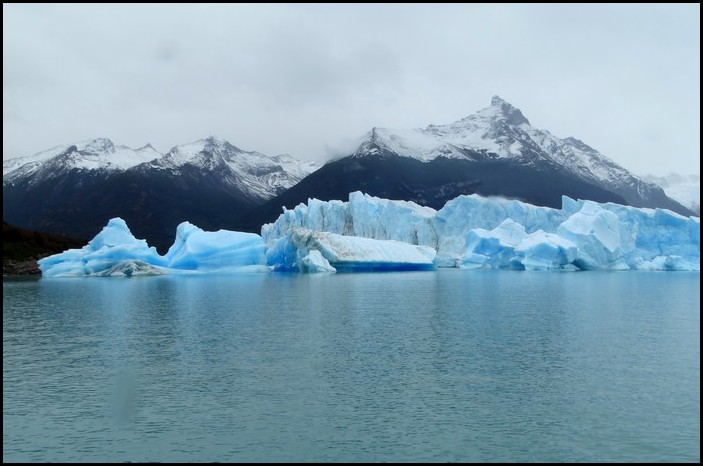
8. Absence of the Amazon
Only a teeny part of far northeast Argentina is tropical. It’s located at the world renowned Iguazu Waterfalls, at the tri-border comprised of Argentina, Brazil and Paraguay.
However, while the region is hot and steamy, set at low altitude and definintaly tropical, it is not part of the mighty Amazon basin, which is much further north.
Instead, Argentina has tons of other gorgeous natural places, including stark Andes peaks, glaciers, vast pampas plains, pretty lakes and the world’s southernmost lands, outside of Antarctica.
9. Heated homes
I traveled for eight months through Ecuador, Colombia and Peru. None of those countries use heat indoors, no matter how cold it gets outside. They don’t even have any heaters inside. No built-in heat systems nor portable room heaters.
Even at high altitudes in the Andes Mountains, nobody uses indoor heat! It’s not part of their historical traditions. And despite modern technology, electricity and gas systems, they haven’t adapted to using indoor heating.
They simply live inside cold houses, as if that’s perfectly normal (well, to them it is). They just put on more clothes, even coats and scarves if required. At night, they just pile on more and more thick blankets.
I’ve literally slept in many houses, hotels and guesthouses when the outdoor tempertures dipped to 3 C / 38F or even 0 C / 32F, with no heat provided. To survive in comfort I bought myself a small electric space heater, which I still carry in anticipation of traveling around Bolivia.
But, to my great relief, Argentinians DO use heat indoors. In fact, they have built-in radiator heat systems in houses, stores and other buildings. Just like in America or Europe.
This culture of indoor heating is no doubt a result of Argentina’s geographical location much further south from the Equator than other South American countries.
Whatever the reason, I for one am certainly glad for Argentina’s indoor heating!
Btw- Chileans also use indoor heating. Their geographical is equally far south, lying just west of Argentina.

Summary
Argentina is proving to be one of my favorite South American countries. It has great diversity of nature, delicious food, low prices and…indoor heating!
Although Argentina has similar Spanish colonial history and Latino culture, it also has many unique cultural traits that distinguish it from its South American neighbors.
========================
You might also like:
11 Interesting Facts about Argentina
12 Interesting Facts about Chile
===========================












 Hi! I'm Lash, an American nomadic world traveler who's been traveling solo since 1998. I’m passionate about traveling the world nomadically and then sharing it all with you. I hope to inspire you to travel the world, to entertain you with tales from the road, and to help you reach your travel dreams. Welcome!
Hi! I'm Lash, an American nomadic world traveler who's been traveling solo since 1998. I’m passionate about traveling the world nomadically and then sharing it all with you. I hope to inspire you to travel the world, to entertain you with tales from the road, and to help you reach your travel dreams. Welcome! 




1 pings
Introduction to Paraguay - LashWorldTour
2023/05/02 at 7:53 am (UTC 8) Link to this comment
[…] 9 Things Distinctly Argentinian […]